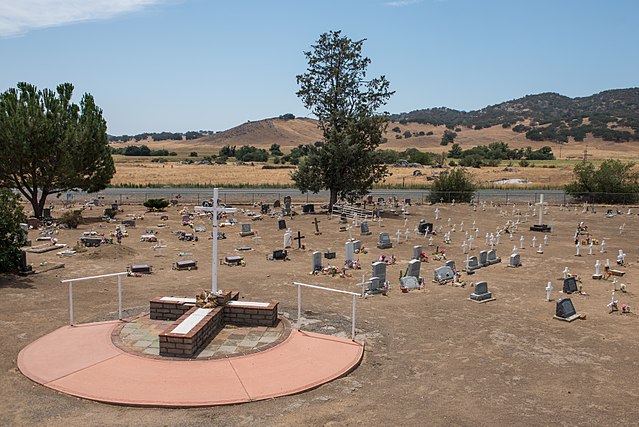The Santa Ysabel Asistencia was founded on September 20, 1818, at Cañada de Santa Ysabel in the mountains east of San Diego, as a asistencia or "sub-mission" to Mission San Diego de Alcalá, and to serve as a rest stop for those travelling between San Diego and Sonora. The native population of approximately 450 neophytes consisted of both Luiseño and Diegueño peoples. Based on historical records, Santa Ysabel enjoyed a higher-than-average conversion rate when compared to the other California missions. Given its remote location, the facility was visited infrequently by the padres after secularization of the missions in the 1830s.
The Church of Saint John the Baptist, erected on the site of the original Santa Ysabel Asistencia in 1924.
Cemetery at Santa Ysabel Asistencia
Mission San Diego de Alcalá
Mission Basilica San Diego de Alcalá was the second Franciscan founded mission in The Californias, a province of New Spain. Located in present-day San Diego, California, it was founded on July 16, 1769, by Spanish friar Junípero Serra, in an area long inhabited by the Kumeyaay people. The mission and the surrounding area were named for the Catholic saint Didacus of Alcalá, a Spaniard more commonly known as San Diego. The mission was the site of the first Christian burial in Alta California. The original mission burned in 1775 during an uprising by local natives. San Diego is also generally regarded as the site of the region's first public execution, in 1778. Father Luis Jayme, California's first Christian martyr who was among those killed during the 1775 uprising against the mission, lies entombed beneath the chancel floor. The current church, built in the early 19th century, is the fifth to stand on this location. The mission site is a National Historic Landmark.

The church façade of Mission San Diego de Alcalá
Plaque of the Mission San Diego de Alcala
Mission San Diego de Alcalá as it stood circa 1900. Note the missing Campanario, and the exposed church, which fell into disrepair.





